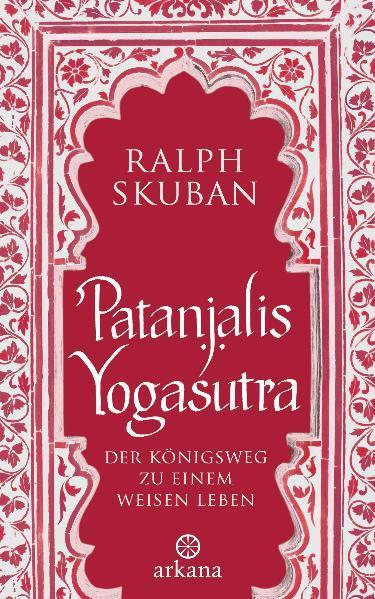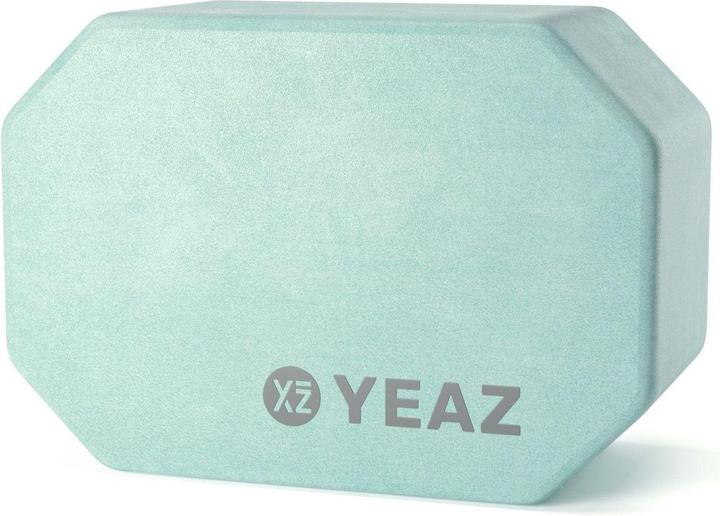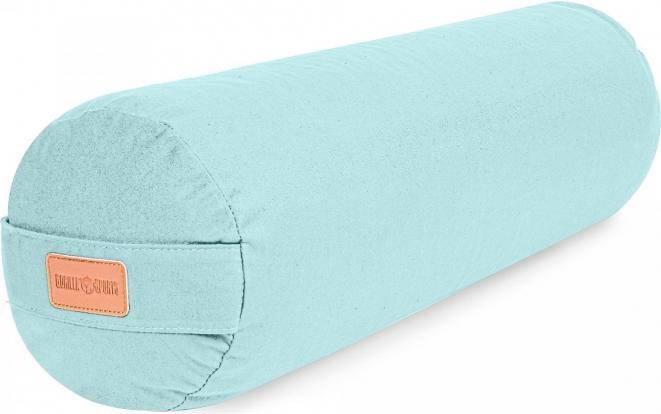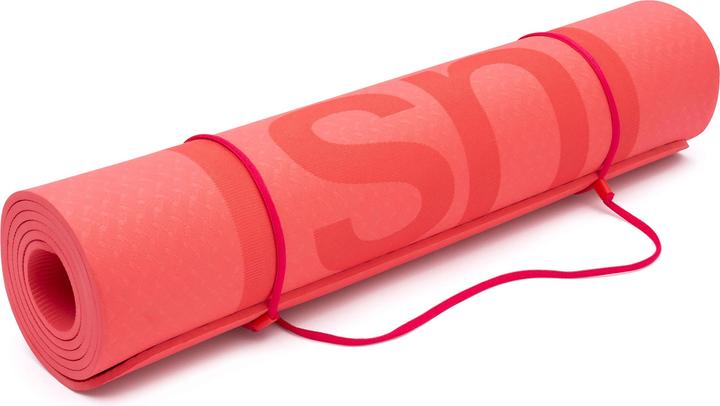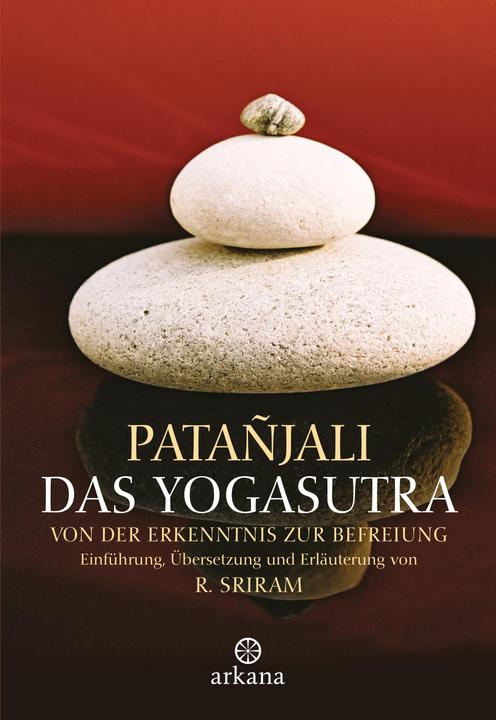
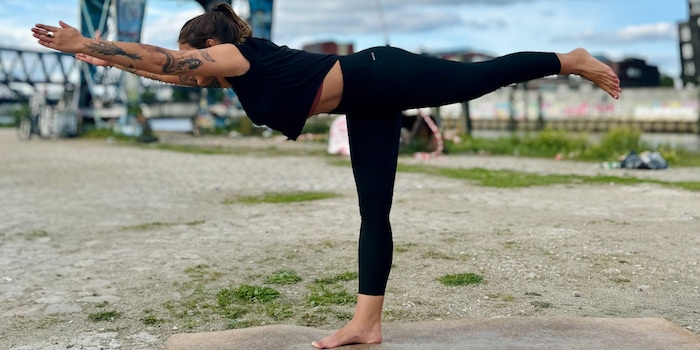
Yoga styles explained: how to find a class that suits you
Some people say they’re not athletic enough to do yoga. Others say yoga’s just for relaxation. And some say it’s a load of woo-woo mumbo jumbo. So, who’s right? This breakdown of different types of yoga will help you find a style that suits you.
Is yoga relaxing? Anyone who’s attended a Bikram course as a beginner would give you a firm no on that. When you look at photos of yogis, you’ll often see them doing handstands or crossing their legs behind their heads. So is that yoga? Do you have to be super strong and flexible before you even set foot on the mat? Yet again, it’s a definite «no». In fact, there’s a yoga style for every fitness level and body type.

What is yoga anyway?
The word «yoga» means «connection» or «unity». It originated in India as a spiritual practice to harmonise body and mind and to achieve enlightenment. In the beginning, yoga was a purely meditative, philosophical practice without any «fitness» element. Numerous yoga paths have developed over the last 5,000 years. Following Jnana yoga (the path of knowledge), Bhakti yoga (the path of devotion) and Karma yoga (the path of action), Hatha yoga emerged between the 11th and 15th centuries as the first style to introduce poses («asanas») and breathing exercises («pranayama»). As the theory goes: healthy body, healthy mind. Plus, a toned body’s much better able to cope with hours of meditation.
Hatha yoga gave rise to many other styles focusing on bodily movements, which people around the world have adopted and built upon. Today, the spiritual element of yoga has clearly lost ground to the fitness element, especially in Western countries. Even so, the goal of the practice is still to train your mind through physical movement – to achieve mental resilience and calm.
With this in mind, you’ll be able to choose a class that’s right for you:
Yoga styles at a glance: from Hatha to Acro
For beginners
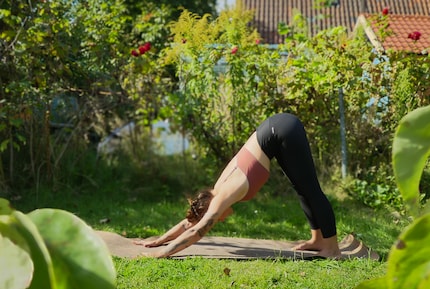
Source: Ronja Magdziak
Hatha yoga
Hatha introduced 84 different poses to yoga, practised today in countless variations. In a Hatha class, the teacher combines a selection of these poses in a meaningful way, allowing each one to build on the last. These classes are usually gentle, with numerous modifications and a strong focus on breathing. This allows you to find your limits and practice yoga in a way that aligns with your own body.
Who is Hatha yoga suitable for?
Hatha yoga’s particularly well suited to beginners. In these classes, you can get used to the most typical poses and learn how to execute them properly. Depending on your instructor, Hatha classes can also really get you breaking out in a sweat. That said, the poses are performed slowly, one after the other, so you’ll have time to find your own pace and difficulty level.
Vinyasa yoga
Vinyasa or Flow yoga is unlike Hatha in the sense that the poses flow seamlessly from one to the next. This makes the classes more dynamic. Instead of practising one pose for longer, you usually practise by repeating a sequence of movements several times.
Who is Vinyasa yoga suitable for?
Vinyasa yoga’s ideal for you if you get bored easily and want a bit more of a challenge. Ideally, you’ll already know the basic poses or have a certain amount of strength and stamina. However, you can also go to Slow Flow classes, which are specially designed to be tranquil. They focus more on using movement as a relaxation technique.
Iyengar yoga
B.K.S. Iyengar developed this style (a variation of Hatha yoga) in the 1930s and 40s to enable people of all ages and physical conditions to practise yoga in a healthy way. By making use of blocks, belts, cushions and chairs, Iyengar yoga ensures the poses can be performed correctly and safely. While this may sound pretty chill, don’t think you’ll escape the post-workout muscle ache. If done correctly, however, the poses themselves shouldn’t cause you any pain.
Who is Iyengar yoga suitable for?
Iyengar classes are fairly slow-paced and detailed. You’ll get very precise instructions and your instructor will check your poses. Beginners especially will gain valuable knowledge to be able to practice yoga safely on a long-term basis. Advanced students will also improve their poses in these classes.
For relaxation
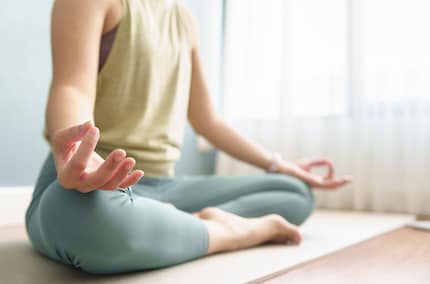
Source: eggeegg/Shutterstock
Yin yoga
Yin yoga’s all about relaxation and wellness. It involves getting into stretching poses and holding them for between three and 20 minutes. This style of yoga’s positive impact on muscles, connective tissue and joints apparently results primarily from staying in a pose for a long time.
Who is Yin yoga suitable for?
Yin is perfect if you want to do something good for yourself without breaking a sweat. The stretches are tough but relaxing, allowing you to cultivate calmness and mindfulness. At the same time, this practice is very meditative.
Restorative yoga
Restorative yoga is also relaxation-based, albeit with a greater focus on healing and stress reduction. Unlike Yin, aids such as blankets and cushions are gradually added in to make the stretches even more comfortable.
Who is Restorative yoga suitable for?
These soothing sessions will be the right fit for you if you’re looking to balance out the stress of everyday life, relax after doing sport or simply chill out.
Kundalini yoga
Another big part of yoga involves energies within the body, releasing blockages and allowing energy to flow freely. In Kundalini yoga, all of this is activated through dynamic movements, breathing exercises, chants (mantras) and meditation.
Who is Kundalini yoga suitable for?
Kundalini is a very deliberate, mindful practice. The courses are tranquil, gentle on the body and ideal for beginners with an interest in spirituality.
For advanced yogis
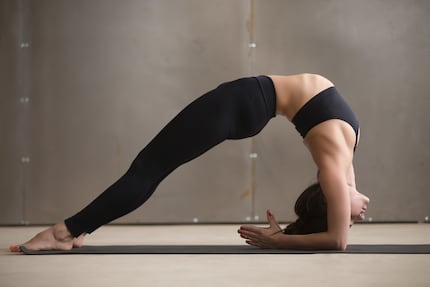
Source: fizkes/Shutterstock
Ashtanga Vinyasa
Ashtanga Vinyasa (not to be confused with Ashtanga yoga, which is a yoga philosophy) is more on the challenging side. Although there are six set series of poses, most yoga studios only practise the first. Each series consists of a warm-up, standing poses, seated poses, a few advanced moves such as arm balances, and a more gentle sequence to round things off. Ashtanga Vinyasa movements closely follow the breathing, which boosts concentration and puts you in a meditation-like state. At self-led Mysore Style classes, you practise the series yourself, only receiving some assistance from the instructor. Ashtanga classes usually last 90–120 minutes.
Who is Ashtanga Vinyasa suitable for?
Ashtanga’s aimed at advanced yoga practitioners who’re already familiar with the basic poses and practice them regularly. The movements in the series are done all in one go, without a break, so you should bring discipline and a good dose of strength and stamina to your classes. Every class is exactly the same, which some people may find boring. Others, however, will see it as motivating, because your progress is quickly noticeable.
Jivamukti yoga
Jivamukti was developed in New York by Sharon Gannon and David Life in 1984. It’s an advanced style of yoga that combines poses and spiritual practice. Like in Vinyasa, each pose flows smoothly into the next. As is the case in Ashtanga, Jivamukti also has a fixed structure, but it’s less strictly adhered to. Accompanied by mantras, breathing exercises and meditation, Jivamukti is much more spiritual than other Western yoga classes.
Who is Jivamukti yoga suitable for?
Before signing up for Jivamukti, you should have a certain level of basic fitness or yoga experience and an interest in spirituality. If that’s the case for you, you’ll probably leave your Jivamukti class feeling completely relaxed, both mentally and physically.
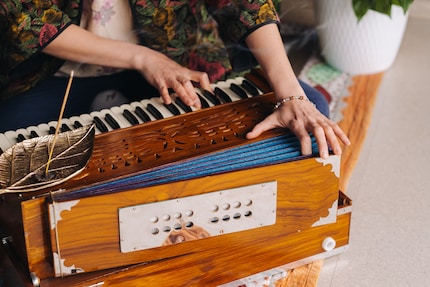
Source: Lobachad/Shutterstock
Bikram/Hot yoga
They’re not joking when they call it «hot» yoga. Bikram involves practising a series of 26 set poses at an air temperature of around 40 degrees Celsius. The heat makes your body more flexible, while sweating supposedly flushes toxins from the body. A Bikram class usually lasts 90 minutes.
Who is Bikram yoga suitable for?
Bikram is a very physically intense practice and isn’t recommended for people with cardiovascular problems. Up for a challenge that makes you break a sweat? Give it a go.
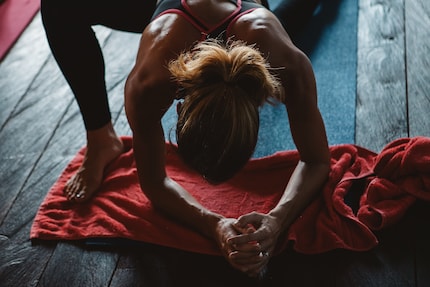
Source: Sasha.shine.bright/Shutterstock
Rocket yoga
Some people wonder whether Rocket yoga is actually yoga. As a matter of fact, this yoga style focuses almost exclusively on physical practice. Based on traditional Ashtanga, it was developed in San Francisco by Larry Schulz in the 1980s. The intention? To bring more flexibility and freedom to the practice. With a number of arm balances and inversion poses, Rocket yoga classes are very challenging.
Who is Rocket yoga suitable for?
If you’ve been doing yoga for a while and are on the lookout for a new challenge, Rocket yoga might be for you. The classes give you the chance to try out advanced poses and take your practice to the next level. Spirituality doesn’t play much of a part in this style of yoga.
Power yoga
Power yoga also came about in the USA as a result of the increasing focus on fitness within yoga. Power yoga classes don’t follow a set sequence. Instead, teachers are free to design their classes as they wish. Although classic yoga poses are used and there’s a lot of emphasis on breathing, the main focus is on strength and endurance.
Who is Power yoga suitable for?
If you’re usually pretty sporty and enjoy doing yoga poses, you’ll certainly get your money’s worth at a Power yoga class. You’ll also work up quite the sweat on the mat. You’ll improve your strength, flexibility and balance, and get a real energy boost from the classes.
For fun-loving types
Acro yoga
The «acro» in Acro yoga refers to «acrobatics», combining yoga with elements of the acrobatic arts. These classes involve two-person stretches, strength exercises and flying, the aim being to practice lifts with other people. Developing strength and balance in a fun way, it also improves trust and communication.
Who is Acro yoga suitable for?
Acro yoga’s definitely suited to extroverts and people who like to experiment. The classes can be adapted to any level, so even beginners can join in. Ideally, you should bring a friend with you, but it’s usually still possible to join in with groupwork in class.
Aerial yoga
Aerial yoga also involves flying through the air. This time, you perform your poses with the help of aerial silks attached to the ceiling. Originally, these silks were intended to enable people with joint problems to practice yoga in a healthy way. The hammock offers plenty of support, meaning even inexperienced users can quickly adopt more challenging poses.
Who is Aerial yoga suitable for?
Adventurous people of all levels will have fun doing Aerial yoga. Using the silks makes yoga practice playful. It can provide an interesting change of pace for more advanced yogis, while allowing beginners to unleash their creativity. If it’s spirituality you’re interested in, however, you won’t find what you’re looking for.
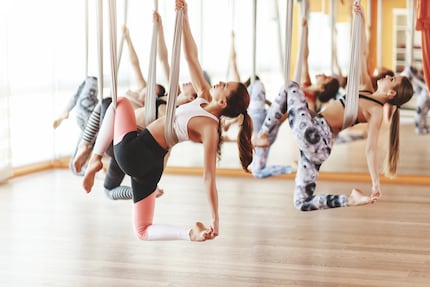
Source: Evgeny Atamanenko/Shutterstock
Beer yoga, Puppy yoga and all the rest
It’s probably no surprise to you that these classes have nothing in common with the original form of yoga and certainly nothing to do with spirituality. If you’re doing yoga with animals, be they puppies or goats, you should question whether the class really is animal-friendly due to the increased risk of stress and injury to the creatures. Besides the animal welfare aspect, there’s no need to be overly priggish about these kinds of classes. After all, they can serve as a gateway to a regular, serious yoga practice.
Time to get started
You’ve now hopefully got an idea of whether yoga’s for you or which class you fancy taking next. It’s likely you’ll meet different instructors along the way – some suitable for you, others less so. The key is to be open-minded, try new things and listen to your body. Do that, and you’ll be sure to discover your favourite class soon.
Sources:
- A History of Modern Yoga by Elizabeth De Michelis
- Hatha Yoga Pradipika by Swami Swatmarama
- Kundalini Tantra by Swami Satyananda Saraswati
- https://www.healthline.com/health/hot-yoga-benefits
- https://www.rocketyogaacademy.com/blog/the-rocket-and-why-it-works
- https://www.yogajournal.com/
Freelance writer, biologist and yoga teacher. Fascinated by nature, body and mind, I love spending time outdoors and being active. More than anything, I enjoy writing about things that make us feel good!
Practical solutions for everyday problems with technology, household hacks and much more.
Show all